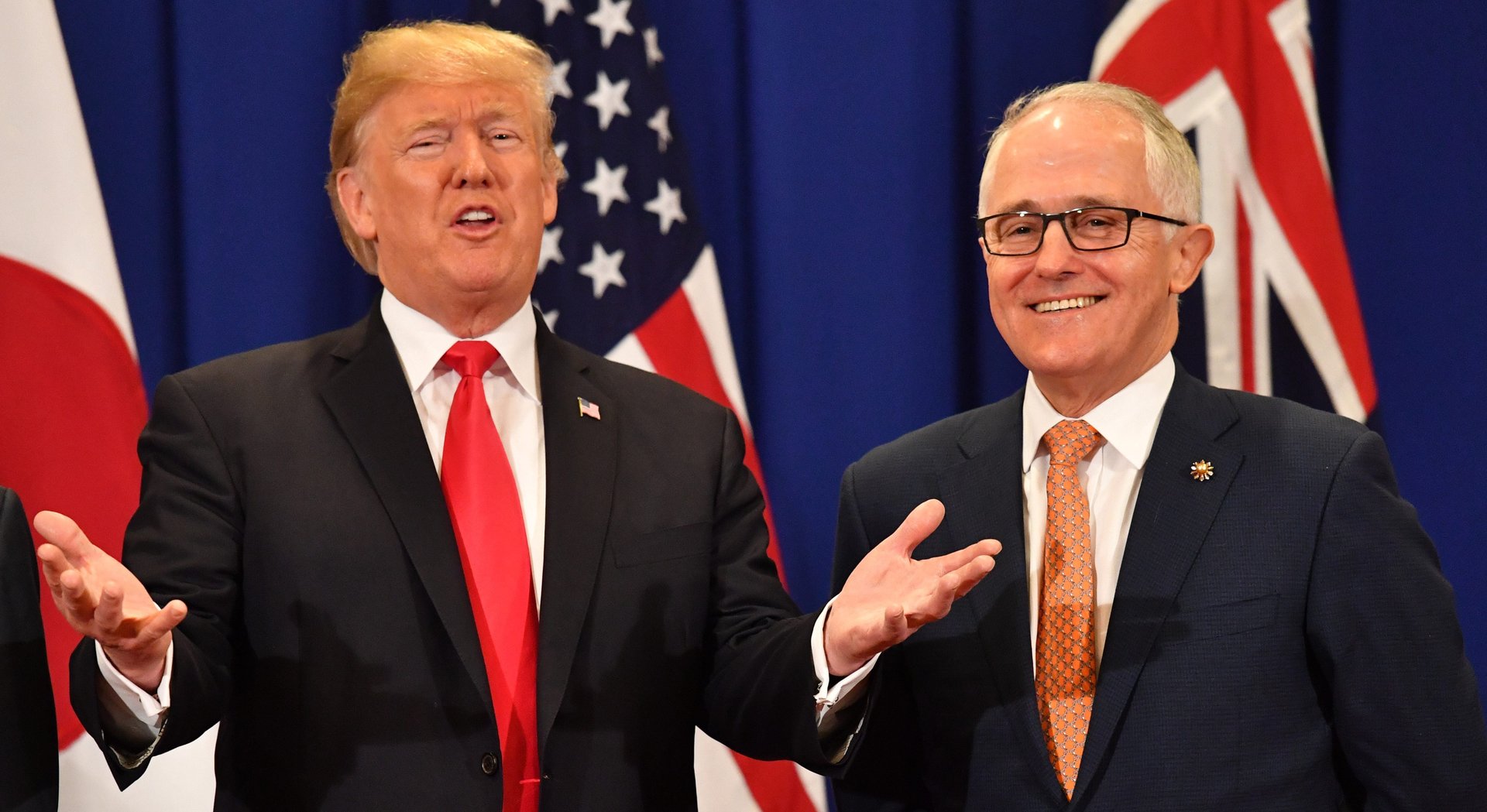Australia is sternly warning against American isolationism in Asia-Pacific
“The United States has been the dominant power in our region throughout Australia’s post-World War II history. Today, China is challenging America’s position.”


“The United States has been the dominant power in our region throughout Australia’s post-World War II history. Today, China is challenging America’s position.”
So reads the overview of a foreign-policy white paper put out by the Australian government today (Nov. 23), which lays out the country’s vision for its foreign relations over the next decade. The document, the first since 2003, is of heightened importance this year at a time when America’s Asia-Pacific allies are getting jittery about US president Donald Trump’s commitment to safeguarding freedom and security in the region.
Daniel Flitton at the Lowy Institute, a Sydney-based think tank, wrote that ”the language feels more direct than previous official documents, which preferred to use soothing terms such as ‘rising powers’ to describe strategic rivalry.”
Among the threats to the existing international order listed in the document by Canberra include: a growing trend of anti-globalization, terrorism, migration, climate change, to name a few. But the focus of the document is no doubt the discussion over the US-China relationship.
“Compounding divergent strategic interests as China’s power grows, tensions could also flare between them over trade and other economic issues,” said the white paper.
The document calls out the “unprecedented pace and scale” of Chinese activity in the contested South China Sea, which includes building artificial islands—something Trump was conspicuously silent about on his recent trip to Asia. A section dedicated to protecting Australia from interference cautions against “growing attempts by foreign governments or their proxies to exert inappropriate influence on and to undermine Australia’s sovereign institutions and decision-making.” Though it names no specific countries, the warning come at a time of acute alertness over attempts by China to influence Australian academia and politics.
With the US as Australia’s long-time security partner and China as Australia’s biggest trading partner, the discussion over how to balance Australia’s relations with the two countries is one that has been heating up in the past year. “This is the first time in our history that our dominant trading partner is not also a dominant security partner,” prime minister Malcolm Turnbull said of the white paper.
Rory Medcalf, a professor at Australian National University in Canberra, told Australian broadcaster SBS that “the white paper is pretty realistic in not pretending that Australia can somehow mediate or solve US-China tensions alone.” Instead, he said, it casts the relationship between the two powers in a wider “Indo-Pacific” framework that includes other countries in the region—for example, by forming coalitions with countries like Japan, India, and Indonesia.
Indeed, in recent weeks, there has been increasing discussion of the idea of the Asia “quad,” which includes the US, Australia, India, and Japan. “A decade after it first appeared and was ignored by most states under Chinese pressure, it has now bounced back with a vigor few would have expected just a year ago,” wrote Harsh V. Pant (paywall), a professor of international relations at King’s College London.
However, Australia also made clear that continued US engagement is key to maintaining the “effectiveness and liberal character of the rules-based order,” while acknowledging that “there is greater debate and uncertainty in the United States about the costs and benefits of its leadership in parts of the international system.”
Conspicuously missing from the document is the word “Trump.” Australian Strategic Policy Institute executive director Peter Jennings told the Australian Financial Review (paywall) that part of Australia’s tough diplomacy task is in affirming the value of the relationship with the US, while at the same time accepting that it’s also Trump’s very unpredictability that poses such challenges to the global order. Said Jennings of Australia’s predicament: “[Y]ou don’t want to create enemies.”